Emma Myldenberger interview with Michel Meyer
Emma Myldenberger was a German group from Weinheim that mixed elements of traditional medieval music with progressive rock. Their debut was released in 1978 and was followed by ‘Tour de Trance’ a year later. The latter achieved a cult status among fans of psychedelic folk music.
At the beginning of eighties the band disbanded. Members formed a new project under the name of Radio Noisz Ensemble. The release of ‘Yniverze’ followed.
Would you like to talk a bit about your background? Where and when did you grow up? Was music a big part of your family life?
Michel Meyer: I was born southern Germany, in Stuttgart in 1956, my parents moved to Mannheim a year later. In 1965 my parents moved again to their own house not far from Mannheim. It was a small village in the east of Mannheim, near Weinheim (this is the town I still live today). My mother loved songs from films which she remembered from the 1930s and 40s, when she was a teenager and a young woman. My father liked classical music and for a while, after having purchased a tape recorder/machine, he used to listen to many of Joseph Haydn’s’ symphonies which were to be heard at the radio on Sunday mornings – and taped them. But I would not say, that my parents were enthusiastic fans of music. Only a little number of records have been in our household (I remember ‘Die Moldau’ by Smetana) before I – and in a smaller way also my younger sister – started to bring singles and LPs into the house at the end of the 60s.
When did you begin playing music? What was your first instrument? Who were your major influences?
After a short time learning to play the piano at the age of twelve I started to play the guitar, together with a friend (who is a musician today). We tried to play songs by the Beatles and later Creedence Clearwater Revival and things like that. And we listened to a large variety of music.
Later I went to a public music school to learn classical guitar playing for a couple of years. When I was about 17 the director of the music school asked me to teach beginners and I did so for a year. At that time I was – as a teacher – member of an ensemble for Renaissance music which existed at this music school. Among many guitar players we had some interesting instruments like recorders, Krummhorn and lutes in this ensemble.
The newly interest in this music lead to a lot of records with Early music and music from the Renaissance in my collection. This was also my first step to folk-music. In the first LP of the Irish Planxty which my early guitar friend had, I found the rough beauty of the archaic Early music and its harmonies. And maybe it lead to buying my first mandolin later …
We are now at the mid of the 70ies and listened to many different folk band and styles: Pentangle, Bothy Band, De Dannan, Fairport Convention, The Chieftains, Gryphon, Clannad to name the Anglo-Irish section, Alan Stivell and Malicorne from France or Ougenweide, Elster Silberflug or Zupfgeigenhansel from Germany.
Later, playing with Emma Myldenberger a wide range of music from all over the world was added.
But mainly I grew up with the Rock-music at the end of the 60ies and beginning 70ies. Led Zeppelin and Black Sabbath, Cream, Can, Guru Guru, Zappa, Captain Beefheart, The Nice, the Allman Brothers and of course the Grateful Dead, a band which accompanies my live since I was sixteen, to express it a bit nostalgic.
But I listened as well to selected jazz music of that time like John Coltrane, the electric jazz-rock of Miles Davis, Wolfgang Dauner’s Et cetera, Peter Brötzmann or Sun Ra.
When did you decide that you wanted to start writing and performing your own music? What brought that about for you?
I visited some concerts from 1971 on: local bands and more or less famous bands who visited the area I lived in: John Mayall, Ten Years After, Guru Guru (who lived not far from us), Kraan, Man, Wolfgang Dauner’s Et cetera, Nectar. In 1972 I visited a big festival in Germersheim (unbeknown to my parents) and after a three day line-up (Family, Rory Gallagher, Guru Guru, Pink Floyd to name a few) the wish developed playing music on a stage myself.
But it took another few years to play with other people, from time to time on the street. It was a new feeling, we did what most of the people didn’t do. We pleased other people. It was nice to go to Heidelberg in early spring when the air has this special thing which comes into the nose and everybody says: “it’ busking time again …”
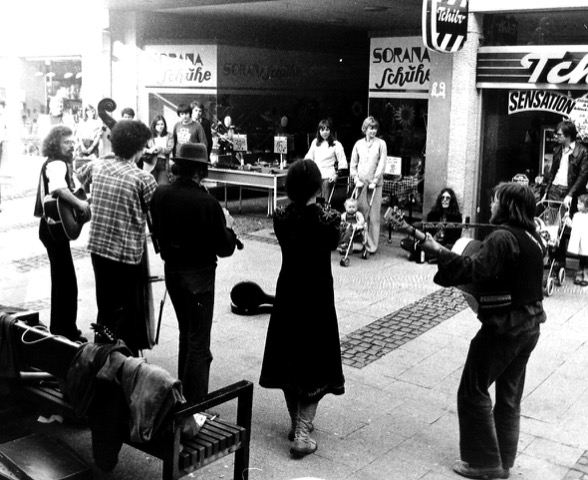
Were you in any other bands before forming Emma Myldenberger?
We had around 1975 a folk-band named ‘Urfuß’, also based in Weinheim, some boys and girls that played German folk songs, Early music and as far as I remember, also some of self composed songs, based on poems or so. This band existed for a few months and had a couple of gigs in the area so at a Folk and Blues-festival in Weinheim in summer 1975 and also on a festival some hundred kilometers in the north. During the existence of this band I wrote the song ‘Emma Myldenberger’ (it is one of the few songs which I have really written alone) which became later a band’s name.
You started as a street musician. Would you like to share some background? What kind of songs did you perform and how did you eventually meet future members of Emma Myldenberger?
We played sometimes on the street but not so often. Some more after having founded Emma Myldenberger. I remember that Anne Goslau (the violin player of EM) and me together with a few other people (from other bands) were going on a 2-week travel though southern Germany playing on the streets in Munich, Nuremberg, Ulm and other places. This was during summer holidays shortly after the founding of EM. Some of the pieces we knew from Emma Myldenberger but also Irish tunes and dances, German folksongs and the one or other self written pieces were played. We preferred short and simple rhythmic pieces and the audience liked it.
Once, in Nuremberg, we were invited by a man to stay over night in his apartment – very generous, we were 5 or 6 persons.
Can you elaborate the formation of Emma Myldenberger?
We came together in may 1977. Gaby Kinscherf, Michael (Topsi) Tkacz, Biber Gullatz and me played the first rehearsal, Anne Goslau, the violin player joined us one or two weeks later. Reines Pauker came into the band at the end of the summer, the lineup was completed.
At that time I was 20 years old expecting to get 21 in July, the other musicians were between 15 and 18 and still went to school. Reines was a bit older, 27, when he joined the band.
From the beginning Emma Myldenberger had a quite unique sound thanks to the variety of our instruments: different recorders, glockenspiel, violin, oboe, guitars and mandolin, double bass, percussion, autoharp, krummhorn, flutes …
Within a few months Emma Myldenberger developed a program of Early music songs, Irish dance tunes, German folksongs and self composed instrumental pieces which allowed some longer solo improvisations (can be heard on our first LP and its reissue as a CD with bonus tracks). The group started in September 1977 playing live and did another 15 gigs in the area until the end of the year.
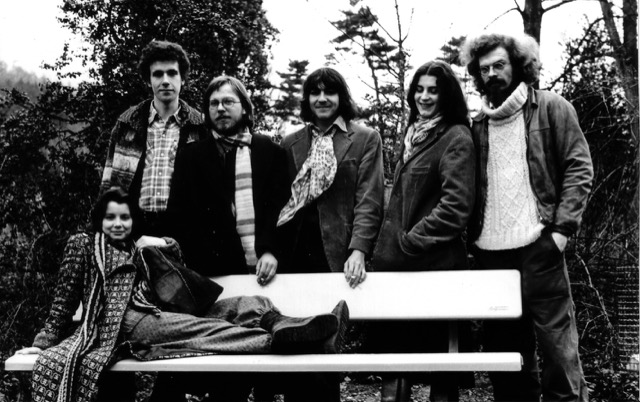
What sort of venues did Emma Myldenberger play early on? Where were they located?
In the beginning we used to play at every place we were invited. Emma Myldenberger played in Folk Clubs, school parties, on the opening of exhibitions, small festivals, street festivals and even on a flee market’s stage. The first 1977 gigs took place within a distance of 200 km from our home.
How did you decide to use the name “Emma Myldenberger”?
As I told before, ‘Emma Myldenberger’ was a song which was performed by the band Emma Myldenberger from the beginning.
It was the name of the great-grand-aunt of a friend of us – but her original name was written Mildenberger which is a quite conventional family name in our area (perhaps you remember a well-known German boxer named Karl Mildenberger).
I don’t remember, what exactly lead to the decision to name the band after this song (the song itself is more Dada than a folksong). We performed it more than 4 years until the disbanding of EM and it was often used it as a concert opener, which developed to a quite long, partly improvised, piece.
What influenced the band’s sound?
The typical EM-sound, based on oboe and violin as solo instruments, has been around from the beginning. We had not heard a group like ours before but when we recorded an early demo-tape (in spring 1978) at Ax Genrich’s studio (Ax Genrich was the guitarist of the first Guru Guru lineup) he said that our music sounds like „Oregon“. A short time later we had listened to some records of this american jazz quartet that used also the oboe as a main solo instrument. We liked their music very much.
Apart from that six musicians each had their preferences as were Anglo-American folksongs, Hungarian folk music, classical music, Turkish tunes and so on. They all came into as influences to the EM compositions. From time to time I performed solo a song by Bertold Brecht/Kurt Weill – singing and guitar playing and rarely, as the second or third encore or so, we performed ‘I Know You Rider’ by the Grateful Dead.
How did you get signed by MS Edition and what can you tell us about this label?
On April 11, 1978 we played a concert at the Folk-Club Darmstadt and on this evening we came in contact with Michael Stühr who had produced and published one or two records before (singer/songwriter Hugh Featherstone was one of the label’s artists) and who was running an alternative book publishing house at that time.
What’s the story behind your debut album? Where did you record it? What kind of equipment did you use and who was the producer? How many hours did you spend in the studio?
Two months after having met Michael Stühr in Darmstadt, EM went to Offenbach (near Frankfurt/M.) to record their first LP entitled ‘Emma Myldenberger’. Bieber-Studio’s sound engineer Kurt Eggmann, who also recorded Radio Noisz Ensembles first record in 1982, recorded it on two-track which means that all instruments were taken together at the same time. No mistakes allowed.
Postprocessing work in the studio mainly were made by Kurt Eggmann, Michael Stühr, Biber Gullatz and Michael Tkacz. The b/w-cover photograph was taken in Reines Pauker’s apartment (our rehearsal place at that time) by Arthur Tkacz, the father of our bass-player.
I do not remember how long it took to record the LP, but it must have been a few days, maybe a week. The band stayed overnight one or two nights in the studio’s guesthouse upside the studio.
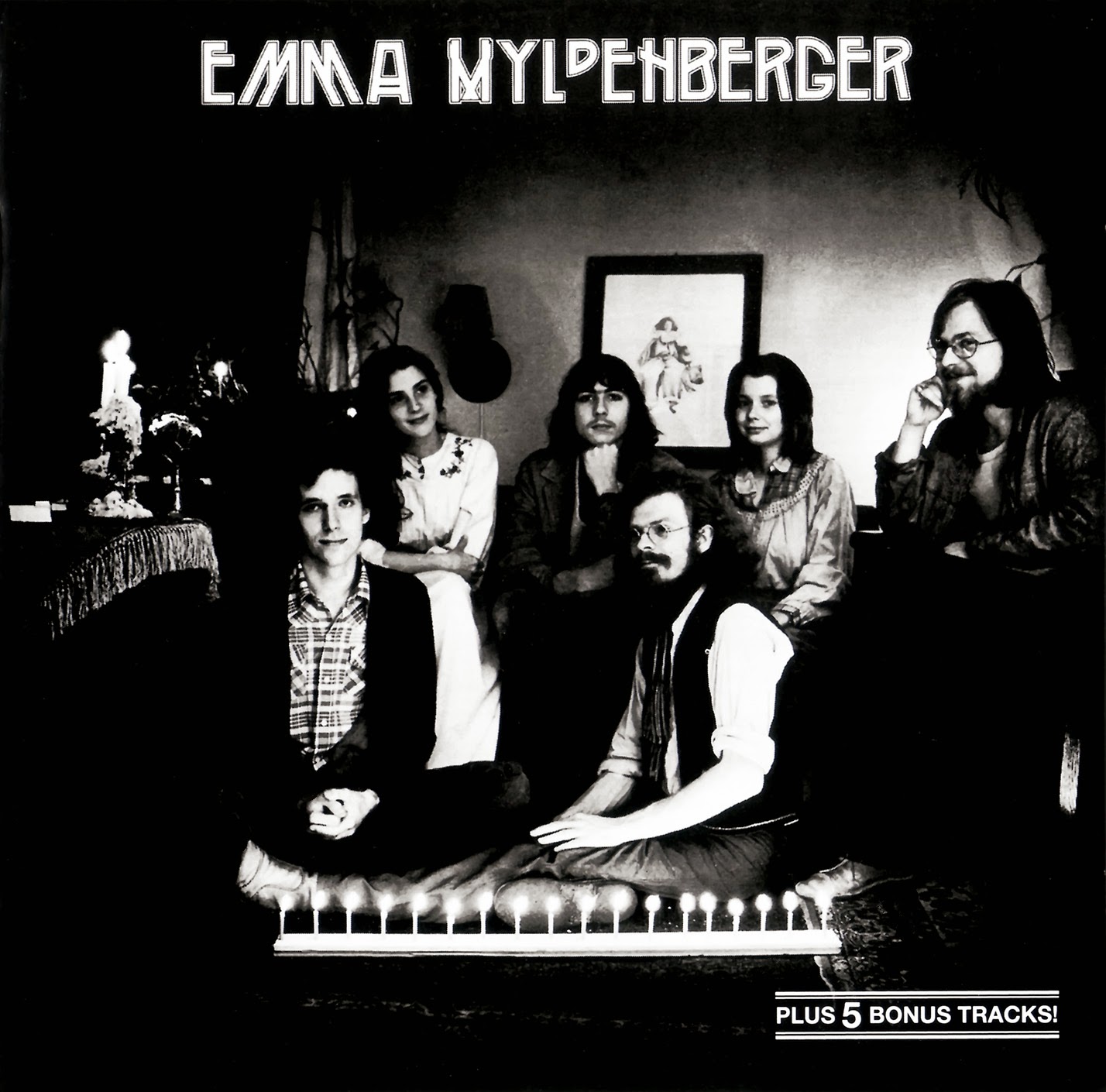
Would you share your insight on the albums’ tracks?
We have here 8 pieces, all self-composed. Some, like ‘Narrentanz’, sounds like a traditional dance tune, ‘In meines Vaters Garten’ is a musical version of a poem by the German author Klabund (1890 – 1928). ‘Unter der Linden’ is based by lyrics written by Walther von der Vogelweide, one of the most famous German troubadours from the Middle Ages. The other tunes are instrumental ones and show in which direction Emma Myldenberger’s music was going to develop to: ‘Oboenstück’, ‘Emmarokkoko’, ‘Opus IV’ and ‘Eines Morgens’.
How about your second release ‘Tour de Trance’? What’s the story behind it?
In the following year 1979 we had collected new material, some of the music has been composed in a kind of retreat that we had together in a house of a friend who was in holidays for a couple of days around Christmas 1978. I remember that pieces like ‘RAA’ and ‘Lenya’s Fantasie’ were composed by the group during this rehearsal week (which came to an end with a great and snowy New Years Eve).
The group’s sound concentrated mostly on instrumental tunes except ‘Regenreigen’ which became the longest tune and contained the musical version of Wolfgang Borchert’s poem ‘Stell dich mitten in den Regen’.
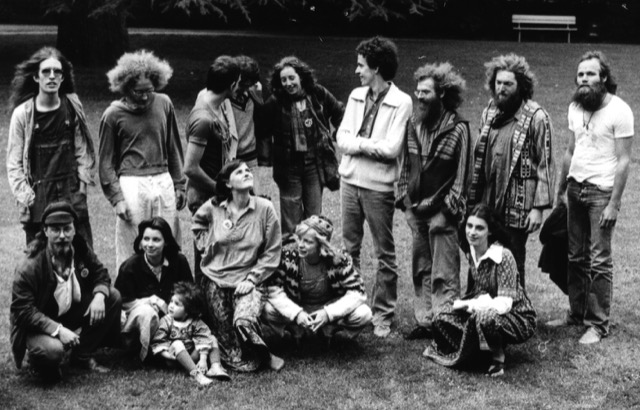
The cover artwork is haunting!
Jockel Stötzer, a friend of Reines Pauker (who was the portraited person on the photo) and later on also a friend of us all had a first career as a photographer, later he run a bar for many years (a place which we loved for many years). He died in 2015.
He told me once that the photo effects were a result of bringing some skin cream onto the lens of the camera – tricky work in a pre-photoshop-area …
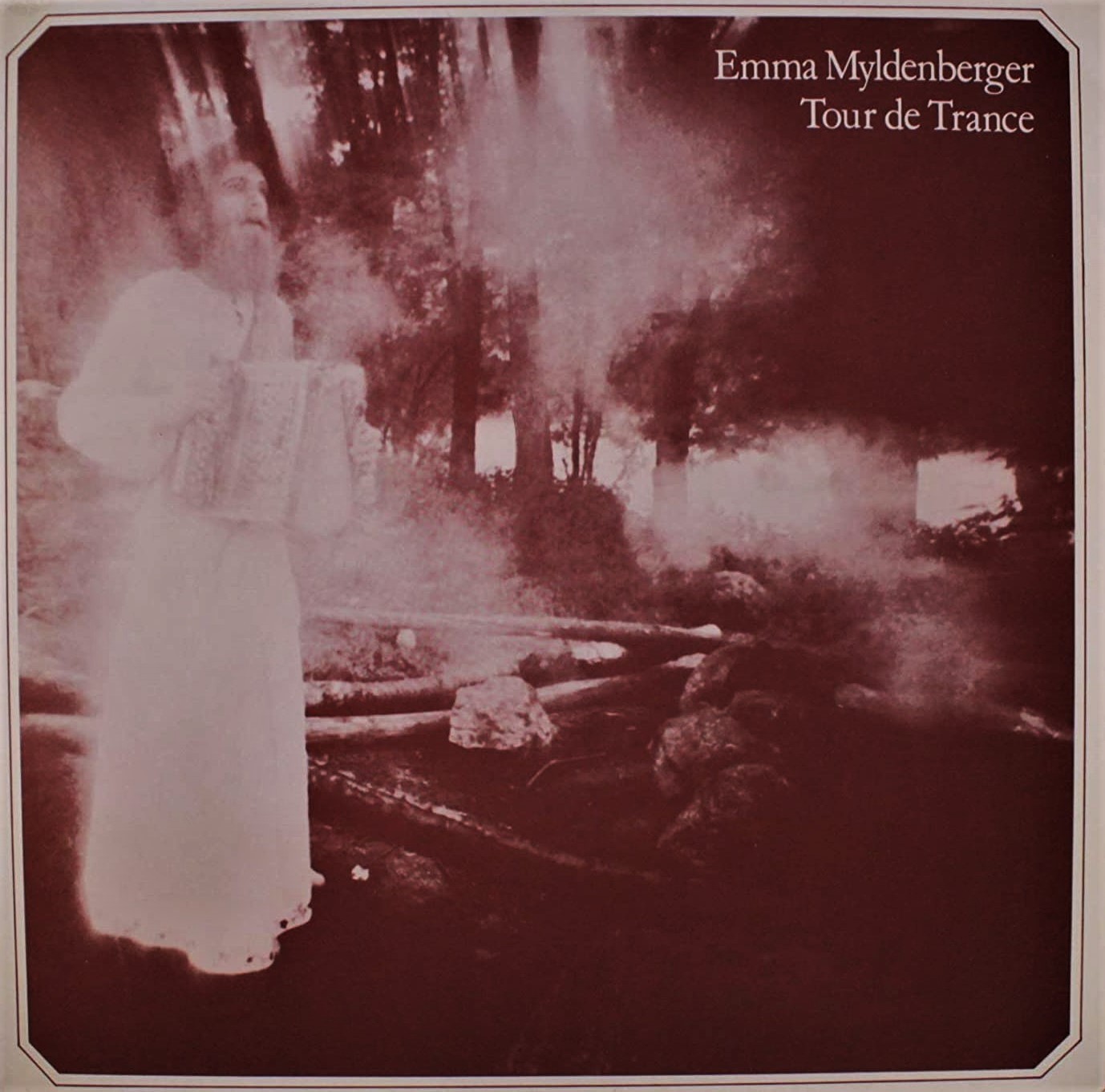
Michael Stühr wanted to press the LP in brown vinyl (the first 1.000 copies), and this is the reason the cover is also in brownish colours. Today I surely would discuss the colour with him. Michael Stühr says that he would as well consider it today.
Where did you record your second LP?
The album was recorded in Weinheim. There was a music club which is not far away from the place I live today and it is still a music club. In those times it was run by the cultural office and they let us the club for a week or so in may 1979.
Michael Stühr came together with the sound engineer Ekkehard Hoffmann from Darmstadt with their mobile recording studio. The band was in a good mood. I remember that the mixing of the tapes has been made later at Krone Studio in Darmstadt on an 8-track recording machine.
Was there a certain concept behind the album?
For me Emma Myldenberger in 1979 was a romantic place. I felt like being in a bigger family and this was visualized in the photograph which was printed in the booklet of ‘Tour de Trance’: Emma Myldenberger and friends. We had some good colleagues from another band of the area and others who helped us with the recording – playing the harp, tablas, percussion and singing arrangements.
The LP starts with a quite conventional self made song but then goes to longer pieces, some instrumental. For me, Emma Myldenberger had gone a big step with ‘Tour de Trance’. I still like this LP, except the first and the last piece which was a studio improvisation. I remember we had a lot of fun while recording it.
“Songwriting was always mainly a group activity.”
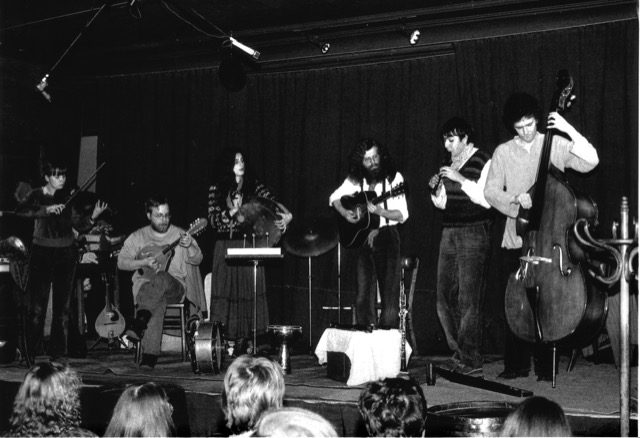
How do you usually approach songwriting?
Songwriting was always mainly a group activity. Someone had an idea, another one a second particle or another rhythm and so different parts were added and finally arranged. I remember this like making a collage. Some pieces have brought in by members, mostly songs, they were arranged by the band later.
Radio Noisz Ensemble went later a step forward by improvising together for example as an intro leading to an arranged main theme or even totally improvised pieces, but this was during the very last concerts in 1985 and 1986.
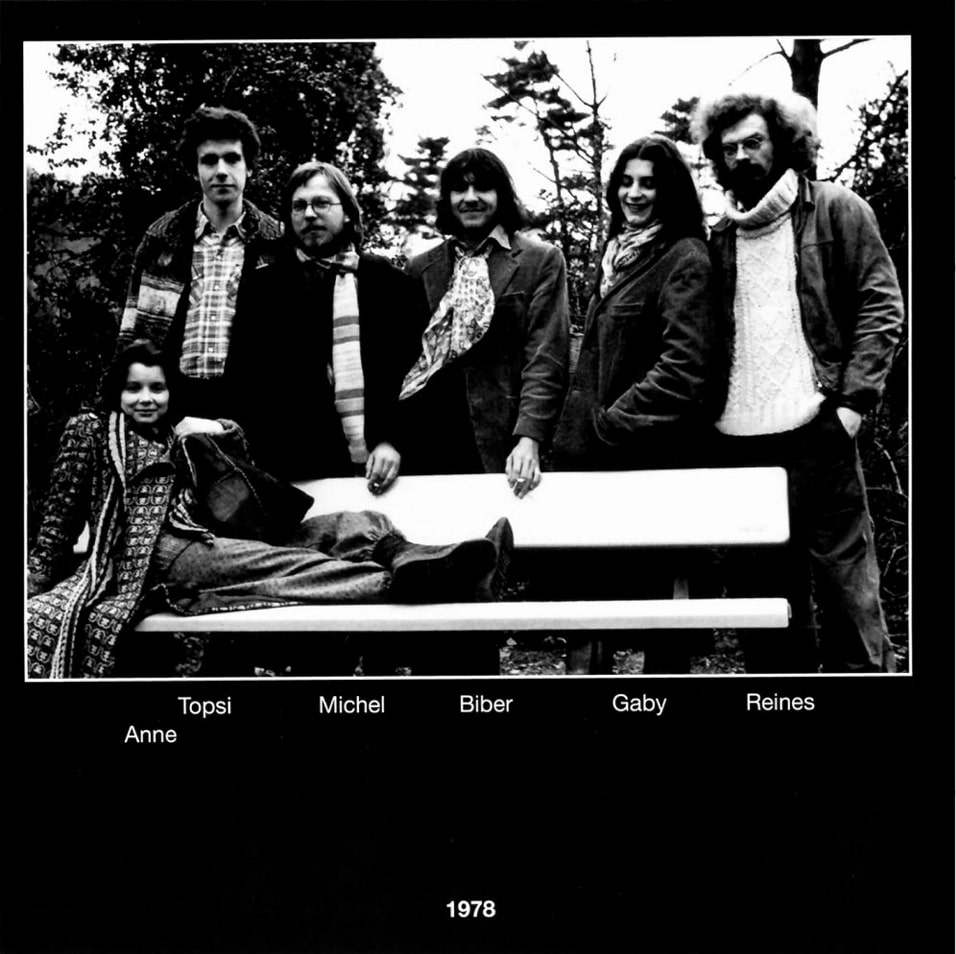
Were you inspired by psychoactive substances like LSD at the time of writing the album? How about literature?
Oh no. I myself attempted marihuana or grass a couple of times when I was 18 or 20 and found out that it was not my thing. Until today I don’t like the smell of it. Other substances like LSD, cocaine or so I did not try at all, maybe I was afraid of losing control in an unknown way. Interestingly I have been asked this drug question before in the context of my visual work as a painter.
In the band some of my colleagues smoked grass from time to time but not all of them. Usually drugs were not a problem and played no major role in the band’s composing and performing activities.
I do not remember a literature which we all shared at this time. I was reading always a lot and do so today. I am sure that we studied lyrics and poems for our songs. It may be true that the one or another introduced poems which she/he had read before to make a song out of it.
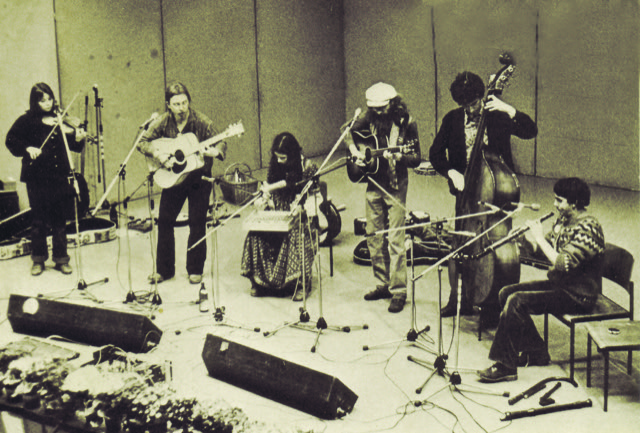
There was a live album from 1981 released on the cassette and you also appeared on compilation called ‘Musik aus dem Odenwald’.
The mentioned live album was first published as a music cassette (MC) at Werner Pipers Transmitter-label. On this MC we had collected some good or acceptable live recordings which were taken from concerts during 1980/81. The title of this publication was ‘Emmaz live!/Live 1980/81’. The cassettes were sold during concerts or festivals. The collection of pieces wanted to be a blue print for our planned third LP. Its working title was ‘Modern Mandala’. But in spring 1981 it was already clear that Emma Myldenberger would split after two final concerts in Italy in July and so we made the cassette to publish the pieces that have not been on a LP before. Much later, in 2007, Garden of Delights published it as a CD with three more Bonus-tracks.
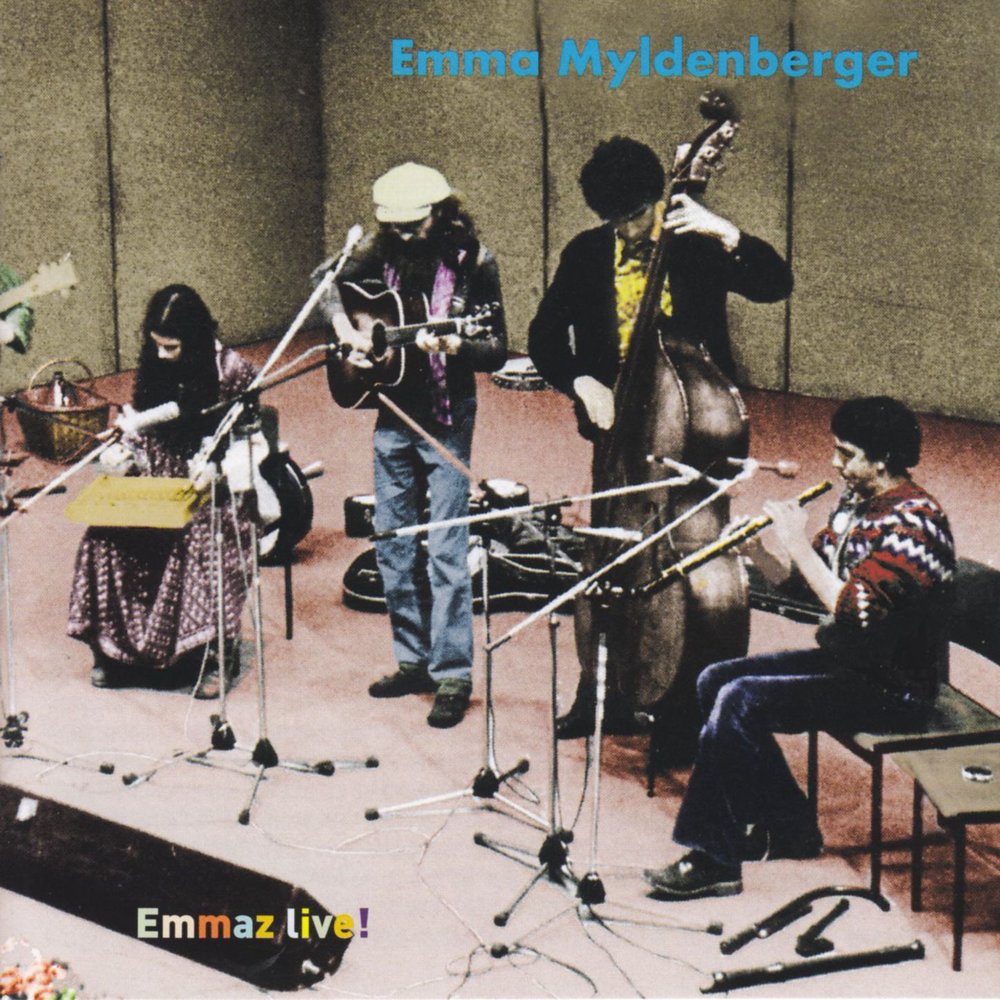
‘Musik aus dem Odenwald’ however was something different. Werner Piper, a publisher of alternative books, magazines and cassettes had invited a number of musicians of our area, mostly from Heidelberg and Weinheim for a concert which took place in Weinheim in November 1977. As an anniversary of his 50th publication it was recorded and the LP came out the next year. Emma Myldenberger are on the record with a shortened name, because not all of the the groups members had been on stage.
How about Radio Noisz Ensemble? You released ‘Yniverze’ in the eighties and it’s another wonderful album recorded by pretty much the same members.
Biber Gullatz, Michael Tkacz and me had the plan to have a new band, continuing the music of Emma Myldenberger, perhaps in a more experimental way – and without a singing voice. We started rehearsing in summer 1981 with new material but also with adaptions of Emma Myldenberger tunes, and after a while the American drummer and percussionist Kevin Austin, who lived in Mannheim at that time, joined us. He is to be seen on our first printed info but as far as I remember he recorded with us a demo-tape but did not appear on stage with us very often.
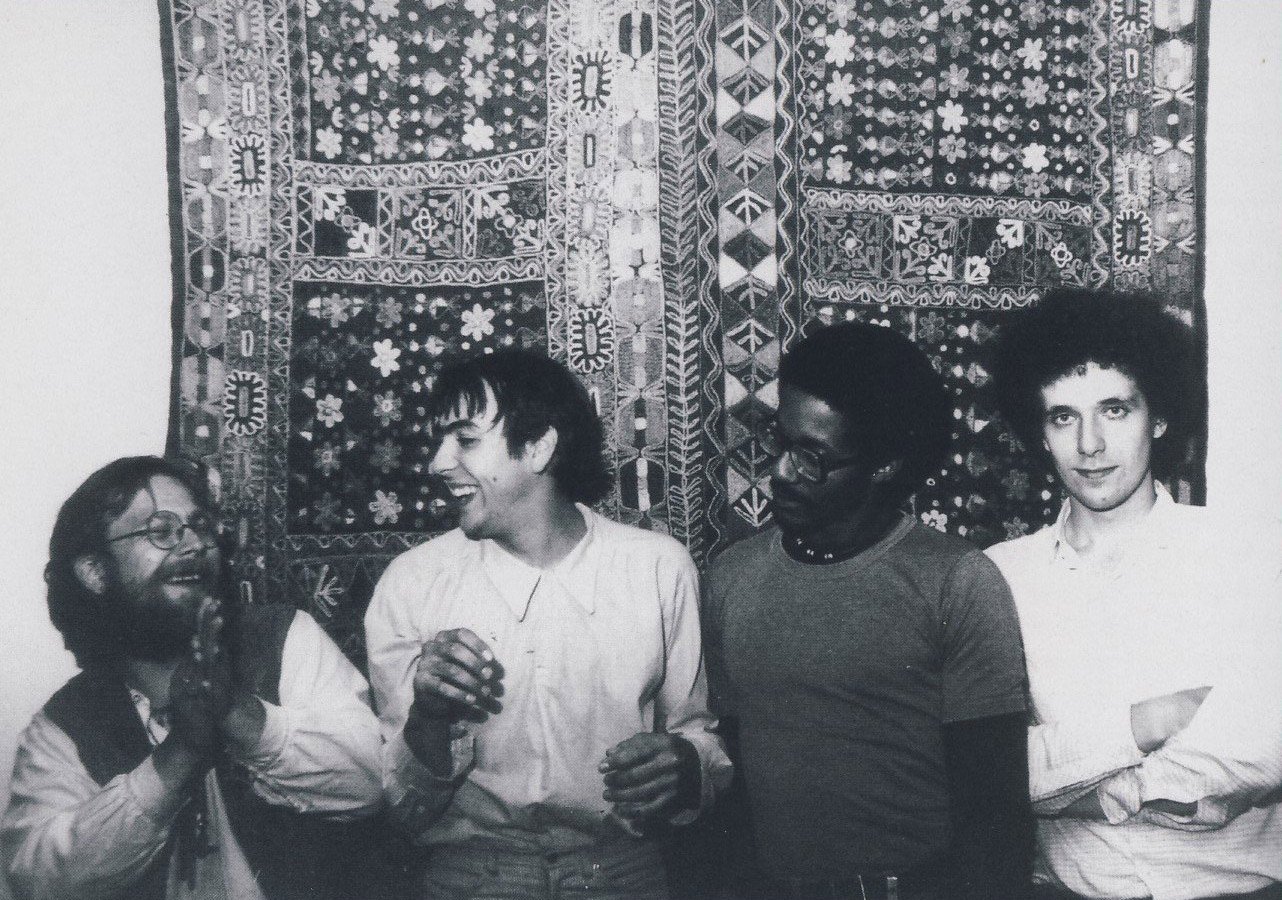
So the Radio Noisz Ensemble performed with no percussion as a trio for a while, even in Zurich, Switzerland in October 1981. Matthias Gassert, a jazz-rock-drummer of our area, joined us later, played a few gigs with us and he was with us in the studio when we recorded RNEs first LP ‘Yniverze’ in March 1982. We also invited Mani Neumeier of Guru Guru with his percussions and tabla to play with us. Within a short time in the studio some of our best studio recordings have been made.
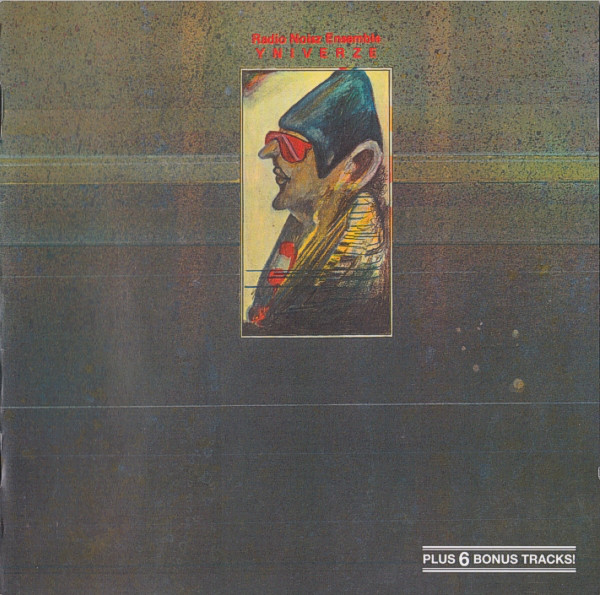
We had been producing the LP ourselves (and payed for it) on our new label ‘UBU MUZIEK’, which has published exactly one record until now.
A second one was planned in 1983 – working title: ‘Odiszée Parck’ – we made a self-recorded blue print of it but could not realize it – lack of money. Same as the Emma Myldenberger Live-CD ‘Odiszée Parck’ came out much later, in 2010. Completed by some live recordings from 1983.
Did I miss any other project any member was involved in? Seppl Niemeyer was also part of the Octopus?
Seppl Niemeyer was part of our circle of acquaintances, for a while he lived in the same house as Reines did, the place of our rehearsals. He was on stage with Emma Myldenberger at the above mentioned ‘Musik aus dem Odenwald festival’ and he did some additional percussion at our first LP. He was in several bands, I remember the Rodgau Monotones, they had a nationwide hit in the 80s.
Biber Gullatz, our oboe-, flute-, krummhorn-player was to be heard on some records, for example with Zeitenwende, a group which came on from the Heidelberg based Elster Silberflug. As far as I remember he played with them live from time to time.
What happened after the band stopped? Were you still in touch with other members? Is any member still involved with the music?
We have a loose contact with the former members of Emma Myldenberger. Everybody knows where the others are and we meet every 10 years in May to an anniversary meal, the last took place in 2017.
Three of us (Gaby Kinscherf, Biber Gullatz and me) are still living in Weinheim, less than a few hundred meters distance. Biber and me have contact quite regularly.
Gaby Kinscherf has now her own studio to create costumes for theatre and comedy stages. Reines Pauker lives with his family in the Palatinate, Anne Goßlau (now: Annekathrin Schrecke) lives with her family in Munich and plays together with some Persian musicians (this information is from 2017) and Michael (Topsi) Tkacz has become a very good double bass player. He teaches bass at the music school in Schwetzingen and is part of classical ensembles, touring in Germany and the world. When I met him last, about three years ago, he started with some friends a blues band with him playing the guitar.
Biber Gullatz has become a quite well-known composer for theatre and film music. He is very good in business also for TV-films and has a studio in Weinheim and one in Berlin. More about him can be read at Wikipedia …
I myself had a studio for graphic design and illustration together with my wife and colleague Anne Sommer-Meyer. Since 2004 we both work exclusively as visual artists. We both have websites if someone should be interested.
Looking back, what was the highlight of your time in the band? Which songs are you most proud of? Where and when was your most memorable gig?
Many highlights to share. Spontaneously I have two occasions in mind. Both have to do with one person. We met Rammy Mizrachi first on July, 1st, 1979 during our performance on stage of the Gurten-Festival in Bern, Switzerland. We enjoy his playing behind us while at the Regenreigen suit and suddenly our music was carried by a brilliant percussion. The roadies an stage had built up an additional microphone. This was a really big moment, Rammy played with us until the end of the concert. Rammy Mizrachi, a Palestinian from Israel, lived with his swiss girlfriend near Zug at that time.
Later, backstage, we agreed that Rammy should play with us when the concert-fee, Rammy’s time schedule and other circumstances would allow it. And so we did from time to time. The most memorable gig was in Bern, perhaps.
The second occasion was at a festival in southern Germany, I have forgotten which one it was but is was an open-air. As far as I remember it was raining. We expected Rammy to play with us but he did not arrive in time. In the moment of the first sounds of our concert two things happened: Rammy with his bongos under his arms came running through the audience towards the stage and: it stopped raining. Audience applauded. A magic moment. Later we were often discussing this moment and I am not sure that some in the band said that they remember that it wasn’t raining until we began with our concert.
Rammy became a friend and played several gigs with us. In June 1980 Emma Myldenberger went on a rehearsal week in to a house near Bielefeld to compose new pieces for new LP. It was an alternative place where seminars took place and things like that. They had a bar and restaurant with a stage and at the end of the week we performed some of the new pieces live for the first time. One of the new pieces we called ‘Zweischlingen’ after the name of the place, another one we adapted from ‘Embryo’s Reise’, ‘Ala Dalona’, an Arabian tune with a very good bongo solo by Rammy who was with us this week.
Although I have visited Rammy and his girlfriend in Switzerland and we always had a very good communication about music (here I heard Okay Temiz’ ‘Oriental Wind’ for the first time) we couldn’t find him later, when I wanted to send him copies of the reissued CDs. He disappeared and I don’t know what has become of him.
Another highlight surely was a three-week tour to Ireland in September/October 1979. Actually, the tour had been organized for another band, Elster Silberflug, by the Deutscher Musikrat and the Goethe-Institute in Dublin. Elster Silberflug had to cancel the tour and Emma Myldenberger played the tour as their ‘replacement’.
The tour had been the longest period during which we six musicians were together – night and day. It was full of adventures with our old Hanomag-bus that had to be reanimated and which had to be repaired during this journey several times. The tour led us through small places in the countryside, to town halls, colleges, schools and, last concert, to the University of Dublin – 16 gigs altogether.
Is there any unreleased material?
I had listened to many tapes and MCs in the time before the Emma Myldenberger and Radio Noisz Ensemble LPs were reissued at the Garden of Delights label between 2006 to 2010. I am sure to have listened to all of them. We generated a lot of recordings for the bonus tracks (live recordings, rehearsals etc.) in an acceptable sound quality. If there is no treasure chest at another place – I don’t know, there are no more recordings of Emma Myldenberger in our band archives which should be published.
Radio Noisz Ensemble has played live until 1986 but in 1985 and 1986 we had only one concert each. These two concerts, 1985 in Luxembourg at the Club Melusina and in 1986 at the Luxor Cinema in Schwetzingen (near Heidelberg) have been recorded. The Luxembourg concert is about 72 minutes and contains the Radio Noisz Ensemble tunes at that time including some very interesting improvisations never heard before. I like these recordings very much.
The year later Radio Noisz Ensemble had its last concert in Schwetzingen. I had an exhibition at that place with my paintings and transparent collages and stuff like that. Later the evening the last concert of the Radio Noisz Ensemble took place at the cinema, accompanied by a slide show of some of my transparent collages etc. which are to be seen on the film.
It was improvised for a large while and Fredi Alberti (of Pan Ra) recorded it on VHS. In 2011 Biber Gullatz made a DVD and a CD of the tape’s soundtrack. The last Concert may fill a double CD now and is like the recordings from Luxembourg a year earlier, unfortunately unpublished until now.
I myself recorded 6 pieces for guitar in 1982/83 – three with the acoustic guitar and thee with the electrical guitar. They have never been published yet. I had the plan to develop further pieces all the years to publish a record with solo guitar pieces called Canto/Loopings. Maybe it will happen one day, who knows?
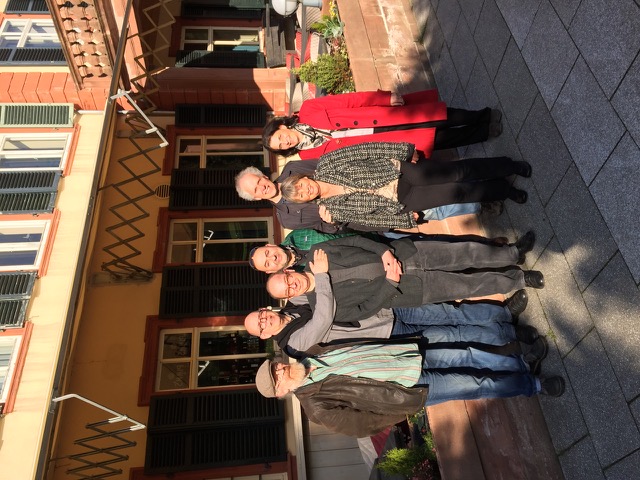
Thank you for taking your time. Last word is yours.
EM was a band that existed for 4 years about more than 40 years ago. It was a very special folk-jazz band, was very rarely played at the radio, had no hits and never appeared on the TV, played around 200 concerts in Germany, Switzerland, Ireland, Luxembourg and Italy. We all were more or less amateurs (maybe except two of us) at that time. We had good ideas and a lot of courage. Summarizing you can say: no big thing.
But today, looking at the Google- or Duck-Duck-Go-results asking after Emma Myldenberger I am wondering how many people are concerned with the group and other quite unknown bands. It is fascinating to recognize that younger people nowadays listen to our music. Sure, you can find more releases today (3 x Emma Myldenberger, 2 x Radio Noisz Ensemble) and that is more than at the time the bands existed and you can even stream the music.
I say that grinning, I like the most of the pieces until today and if I have to work on the computer in the evening I sometimes listen to ‘Regenreigen’ on YouTube. For me this is when the past comes over to today for a very lively moment.
Klemen Breznikar
Biber Gullatz Official Website
Michel Meyer Official Website
Anne Sommer Meyer Official Website



